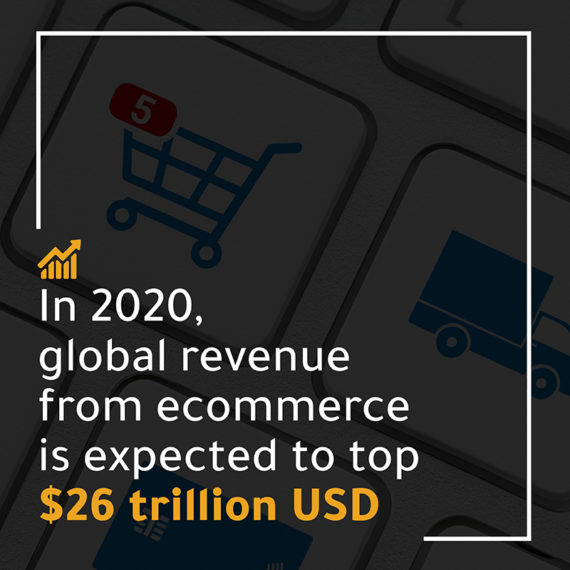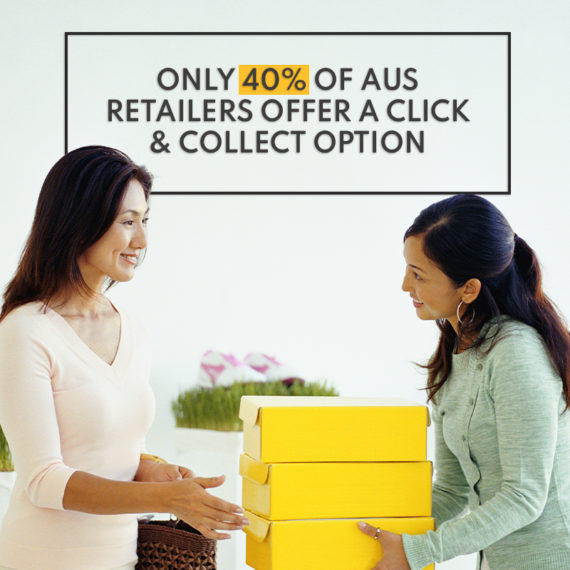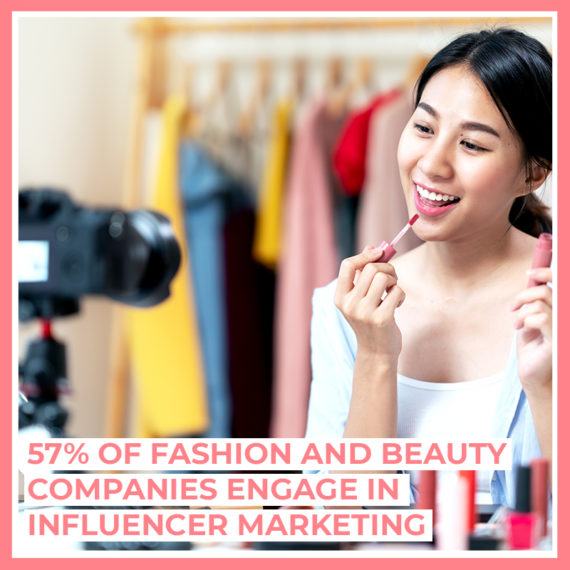Ecommerce is the main accelerator of FMCG (fast-moving consumer goods) around the globe and it’s no wonder. With the world becoming more and more connected digitally and traditional shopping practices failing to fit in with busy modern lifestyles, shopping for goods, from food to clothes, technology and beyond has moved more and more into the digital realm. In 2020, global revenue from ecommerce is expected to top $26 trillion USD. While ecommerce saw a 21% growth in 2018, global political and financial insecurity has slowed the growth of ecommerce in recent years. Though that trend of slow growth is expected through 2023, ecommerce is still expected to grow by over a trillion dollars a year even at its slowest.

Change to meet consumer demand is one of the constants when it comes to FMCG growth. Amazon, of course is leading the way in online sales for the FMCG realm, but Woolworths, Bunnings and many more are adapting their sales and delivery methods to meet the demand for online and immediate purchasing. Woolworths, Coles, Officeworks, MYER, Autobarn, JB Hi-Fi and many, many more Australian companies have embraced Click and Collect as well as online shopping and delivery, allowing customers to both purchase and pick up items at their convenience.

According to Christopher Hatfield, Head of ebusiness at Nestle, the world’s largest food and beverage company is maximizing their ecommerce impact by being present in a huge number of channels, from brick and mortar establishments offering online shopping and click and collect, online only delivery services like Amazon and eBay, and direct to consumer avenues like nespresso.com.
One of the driving factors behind this diversification, is that outside of specific products like Nespresso capsules, consumers buy Nestle products as part of a broader basket – items that are added during other shopping rather than products specifically. Another factor is the low average unit value of a number of Nestle items. Having items such as Maggi noodles – $3.95 for a five pack – available from a number of vendors offers a larger consumer base that selling them form a single store front or vendor.
A final key factor in Nestle’s strategy or diversification of ecommerce channels comes down to the fact that FCMG products have traditionally not owned the customer relationship. The retailers themselves hold the relationship with the consumer – Coles or Woolworths shoppers are fairly loyal to their chosen retailer, a habit reinforced by the retail giants through loyalty programs rewarding repeat shoppers. Rather than building a brand identity and purpose like you would if brand marketing, Nestle has instead opted to identify the avenues of sale that already have that customer base and trust.
This, of course, hasn’t stopped Nestle from innovating in their online marketing approach for certain iconic products. In addition to the nespresso.com online store enabling consumers to buy coffee pods, accessories and machines direct, they have also launched the Kit Kat Chocolatory, an online portal for all things Kit Kat, including the option to create your own personalised chocolate bar or box.
Personalisation is a key trend across a number of markets, not just chocolates. The beauty industry is one of the fastest growing ecommerce sectors in Australia, with a massive 36% year on year sales growth in 2019. In 2020 the beauty industry is expected to net around $6.5 billion in the Australian market, and around $532 billion globally. Beauty product sales make up around 11% of total online sales. Why this rapid growth into a shopping avenue that seems on the surface rather incompatible with the products being sold? It comes down to the acceptance and embrace of new technologies and marketing techniques.
L’Oreal acquired the Canadian augmented reality company, Modiface in 2018 and has integrated the AR technology into an avenue for both allowing customers to virtually experiment with products before buying them, as well as a tool for creating personalized beauty regimens. Modiface allows users to upload a picture of themselves to experiment with how different cosmetics and hair colours might look on them, not only giving consumers a chance to try before they buy from the comfort of their home, but also maximizing the time that customers are spending on the site increasing the chance they will buy something.
In addition to virtually testing makeup, L’Oreal also uses the same technology, combined with advanced AI to diagnose signs of skin aging in women. The technology launched in 2019, Vichy SkinConsultAI uses AI technology to analyse uploaded customer photos to identify seven signs of skin aging, such as under-eye wrinkles and lack of radiance before creating a personalised product regime to deal with their specific skincare needs as part of a subscription service.
Subscription models are becoming more and more prevalent in nearly every market, from beauty to pet care with everything in between. Subscription boxes, such as Bellabox, a cosmetics and skin care package and Dollar Shave Club, a service delivering razors, shave gel, balm and toiletries, add convenience and a sense of value to a purchase, and especially in the case of beauty products, novelty can play a large role in the appeal of such a service, with many boxes including a number of samples or trials of interesting or new products.

The beauty industry hasn’t just embraced new technology, it has also strongly embraced new media when it comes to marketing. 57% of fashion and beauty companies engage in influencer marketing. It’s no wonder, according to a 2019 Influencer Marketing Hub survey, businesses are making $5.20 for every $1 they spend on influencer marketing.
Due both to convenience and ubiquity, it’s no surprise that the number of people ordering on a mobile platform is growing at a massive rate. As of 2019, 26% of orders were placed from a mobile, and that rate is increasing at a rate of 29% YoY, in stark contrast to a decline in desktop and laptop ordering. One of the key factors driving this increase in ordering is apps like Menulog and UberEats, and better mobile optimisation of websites and the massive saturation of handheld devices in Australia. According to a 2019 Deloitte study, mobile penetration in Australia is a staggering 91%, making us one of the most mobile-centric countries of the world. With such penetration, it’s no wonder that more and more Australian are using their mobile devices for browsing and purchasing.
Ensuring that your site is adaptive and mobile friendly is a key step to securing your place in the ecommerce future. There are many steps you can take to properly optimise your site, but one of the first should be compressing images so they don’t take up too much bandwidth and slow down the site. One of Google’s indexing criteria is site speed, so you don’t want to hamstring yourself due to sluggish performance.
